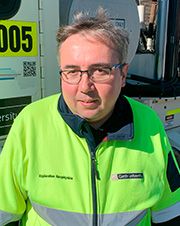Surface and borehole seismic monitoring of CO2 geological storage
OR
SEG members, view the course for free!
Format: Virtual Webinar. 45 min. presentation followed by 15 min. Q&A
An optional post-lecture workshop will immediately follow each lecture for expanded Q&A and networking
Session 1, Tuesday, March 28, 2023, 9 am to 10 am Beijing Time
Session 2, Thursday, May 11, 2023, 5 pm to 6 pm Perth Time
SEG Members Free Access Details
Two live sessions are completed. Please scroll down to watch the videos from the recordings below. SEG members, view the course for free!
Abstract
Geological carbon capture and storage (CCS) or sequestration is a critical component of CO2 emission reduction, which aims to alleviate the global climate change. Geological carbon storage always requires a subsurface monitoring program to address two main goals: (1) surveillance at the reservoir level to verify compliance of the growing CO2 plume with the original plan and (2) early detection of adverse effects, such as leakage of the injected fluid from the containment zone or significant induced seismicity associated with the injection.
Seismic methods play an important role in achieving both goals. Change in CO2 saturation in the pore space inside of the storage reservoir or in the overburden results in the change of elastic properties detectable through changes in seismic reflectivity or travel times. Induced seismicity generates a direct signal usually associated with propagation of the pressure front.
The range of seismic methods — which can be deployed — includes surface and borehole active time-lapse seismic surveys with re-deployable or permanently mounted source and receiver arrays and passive monitoring, e.g. using any components of the wave field originated from the seismic sources beyond our control. Many CO2 geosequestration sites are located near large sources of CO2 emission, such as populated areas with existing infrastructure. As such, the monitoring strategy must accommodate sharing the land (or ocean) with other users and have a minimal environmental impact. Furthermore, geosequestration is a form of waste disposal, which must be cost efficient. All these factors make CCS a leader in innovation, being an early adopter of such disruptive technologies as distributed fibre optic sensing and permanent reservoir monitoring. Small-scale demonstration projects focusing on testing and development of CCS technologies play a critical role in this innovation.
This lecture is based on Australian CCS projects, such as CO2CRC Otway Project and CSIRO In-situ Lab Project, which showcase evolution of the seismic monitoring technology from conventional land 4D seismic to continuous or on demand monitoring using permanent downhole and near-surface geophone and distributed acoustic sensing (DAS) arrays. We discuss how monitoring objectives can be achieved using various acquisition geometries, including land 4D, 4D vertical seismic profiling (VSP), and offset VSP, all of which can be implemented using conventional and permanently mounted seismic sources. Also covered is automation of data acquisition and analysis, as well as passive data analysis.
Your Instructor

Roman Pevzner joined Curtin University (Perth, Western Australia) in 2008 as an associate professor in the Discipline of Exploration Geophysics progressing to professor in 2018. Previously he headed the software development department in DECO Geophysical service company from 2002–2008. At the same time, Roman has also conducted research and teaching at the Geological Faculty of Lomonosov Moscow State University, Seismometry and Geo-acoustics Department. Roman Pevzner has received his PhD in Geophysics (2004), Masters of Science in Geophysics (2001), and Bachelor of Science in Geology (1999) from Lomonosov Moscow State University.
His main areas of interest include subsurface monitoring using active and passive seismic methods, borehole seismic, distributed fiber optic sensing for geophysical applications, and CO2 geosequestration. Roman has co-authored 75 journal papers and more than 170 refereed conference publications.
